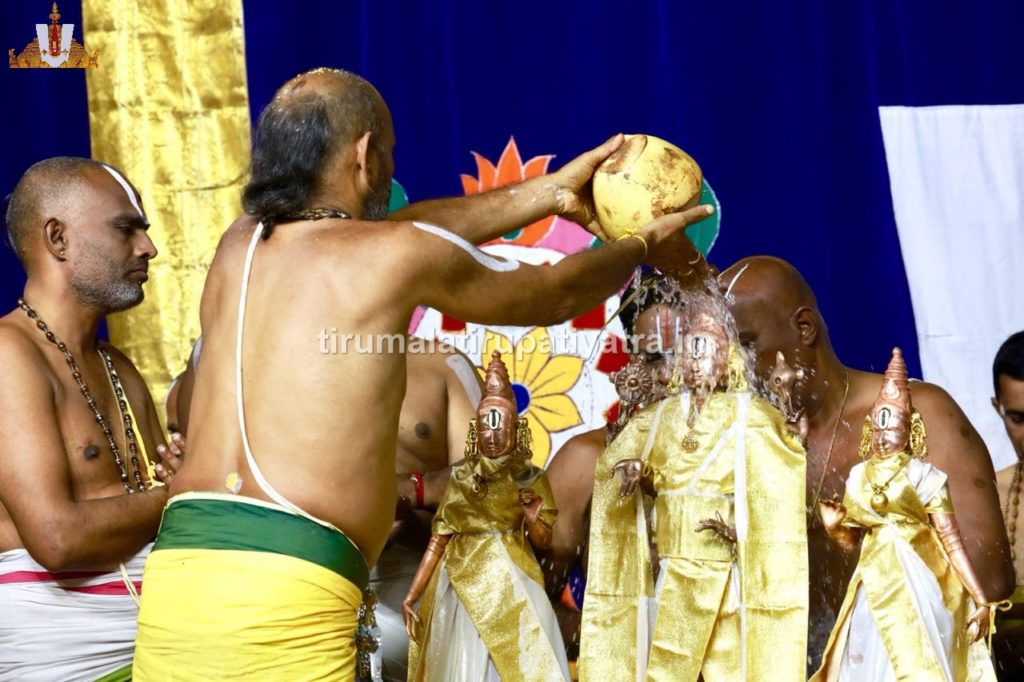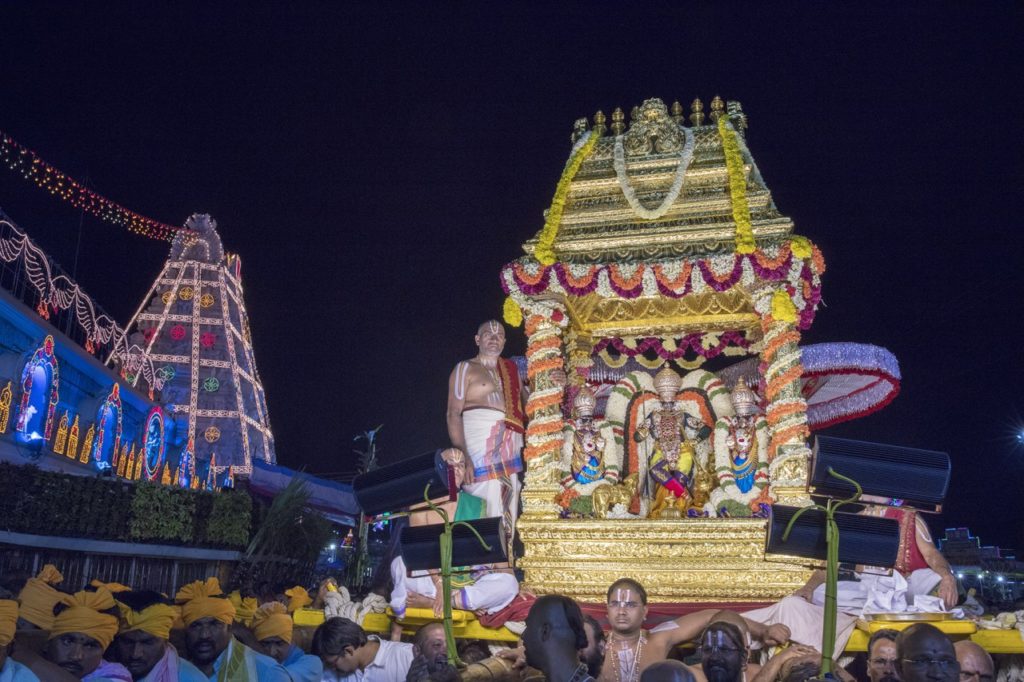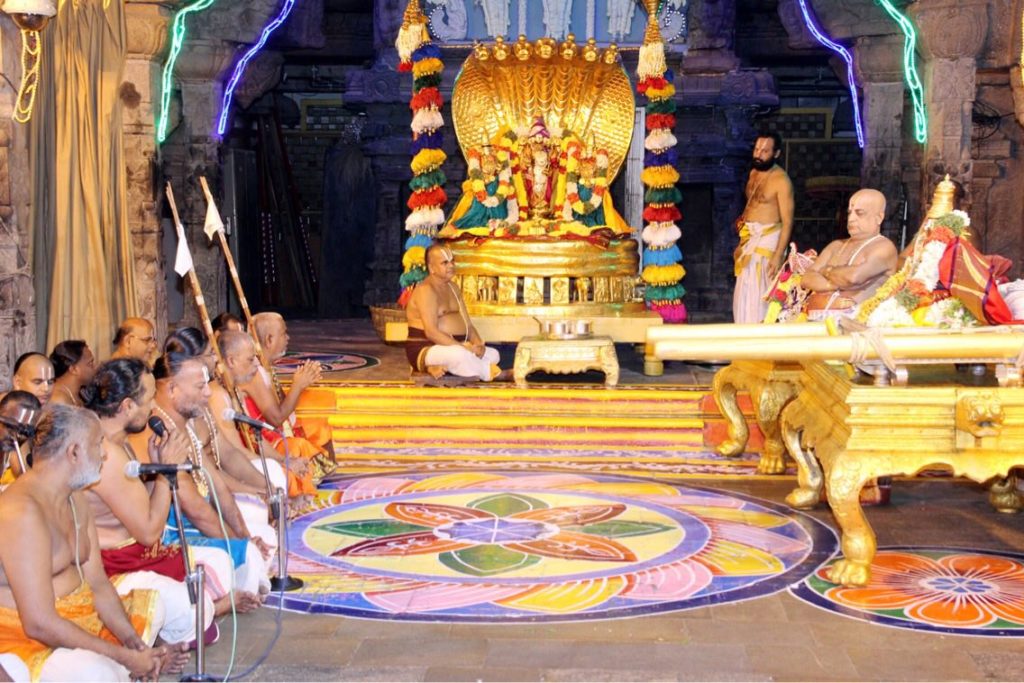Significance of Jyeshtabhishekam Jyeshtabhishekam ( or Abhideyaka abhishekam) is an annual ritual performed to Sri Malayappa Swami along with Sridevi and Bhudevi at Tirumala (Google Maps location) in the Jyeshta masam (May / June). The main purpose of this ritual is, to protect the icons/idols with utmost care. Hence, this ritual is conducted. In this Read More
Tag: Utsavam
The commonly used word, ‘Utsavam’ signifies how our ancestors deeply thought about the welfare of the people. The word ‘Savam’ means Yajna or Kratu. It is for the appeasement of a Supreme Deity, performed per scriptures for the physical and spiritual benefit of the people.
Sri Rama Pattabhishekam
Sri Rama Pattabhishekam in Tirumala On the auspicious day of Chaitra Suddha Dasami ‘Pattabhisheka Asthanam’ or “Sri Rama Pattabhishekam” will be celebrated to Lord Sri Rama in the divine presence of Lord Venkateswara every year in Tirumala. Procession on Four Mada Streets – Around the temple After the performances of ‘Pratakkalaaradhana’ and ‘Madhyaanikaalaradhana’ to Lord Read More
Adhyayana Utsavam
Adhyayana Utsavam The Lord of Seven Hills is worshipped every moment in the form of one or the other seva or Utsavam (procession). These utsavas provide a blissful experience to the devotees. Around 1000 years ago, the famous Sri Vaishnavaite, Bhagavad Ramanujacharya also visited the divine shrine and made arrangements to assist in the performance Read More



